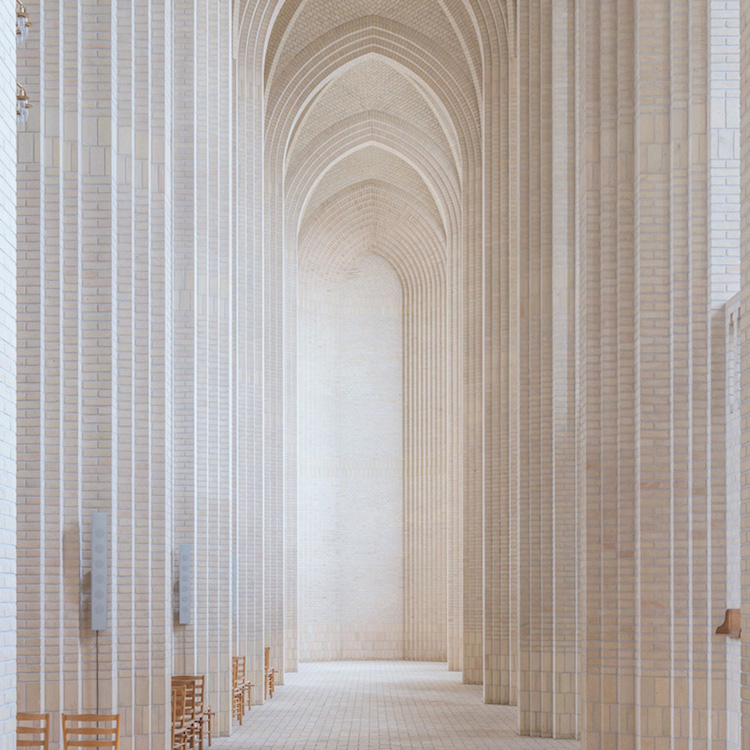COPENHAGEN—Made up of nearly 6 million bricks, with its long perpendicular lines supporting, arching then vaulting the church’s nave, Copenhagen’s Grundtvig’s Church is a rare example of expressionist church architecture. ArchDaily writes the 20th century church, designed by architect Peder Vilhelm Jensen Klint, was built as a memorial to famed 19th century Danish pastor, philosopher, historian and politician, N.F.S. Grundtvig.
Jensen Klint, inspired by Grundtvig’s humanist interpretation of Christianity, merged the scale and stylings of a Gothic cathedral with the aesthetics of a Danish country church to create a landmark worthy of its namesake.
Two competitions were held in 1912 and 1913, capturing numerous design submissions for statues, decorative columns and architectural memorials. Jensen Klint submitted his proposal, ArchDaily continues, under the belief that whether or not his entry was chosen, he should still produce a church he felt Grundtvig deserved.
A modus operandi which may explain how the construction cost for Jensen Klint’s proposal ballooned to twenty times that of the other submissions. Nonetheless, the judges felt confident that donations from the Danish people, doubled by the government, would be sufficient to sponsor the project and announced Jensen Klint as the winner in 1913.
Jensen Klint’s creation is surprisingly traditional, as it’s laid out like a typical cruciform cathedral, with columns separating the nave from two flanking aisles. And l
ike Gothic cathedrals, the church uses soaring pointed arches and windows to define the sacred space with light.
Jensen Klint was also prone to designing elements in triads: most notable are the three towers, as well as the three entries on each side of the church—a religious metaphor for the Trinity common throughout Christian churches around the world. This latter design gesture creates a total of twelve portals – a reference to the twelve entryways to the New Jerusalem as depicted in the Biblical book of Revelations and a nod to the apostolic disciples.
All images by: Ludwig Favre
Do you love or loathe this example of ceramic architecture from the world of contemporary ceramic art and contemporary ceramics? Share your thoughts in the comments below.










Add your valued opinion to this post.